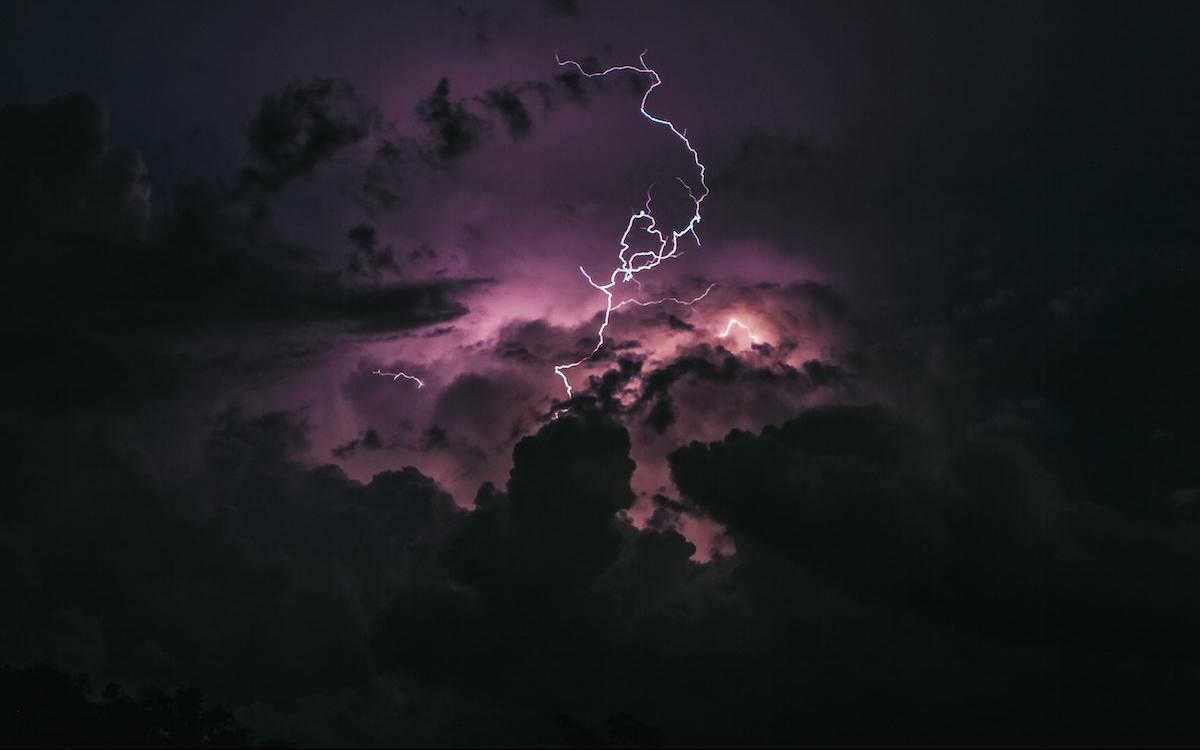
Dark matter is a type of matter that does not participate in electromagnetic interactions, meaning it does not emit or reflect light. It is a fundamental component of the Universe and exerts gravitational forces that influence the motion of stars within galaxies, including our own. Approximately 22% of all matter in the universe is believed to be composed of dark matter.
Dark matter and antimatter
It is essential to distinguish between antimatter and dark matter. Although both phenomena carry an air of mystery and have similar descriptors attached to the term “matter,” they are fundamentally distinct.
Antimatter, also known as antimatter, is a substance comprised of antiparticles. Similar to any other substance, antimatter is composed of atoms, which consist of protons and neutrons (the nucleus of the atom) and electrons (the outer shell of the atom). The only distinction is that these particles are antiprotons, antineutrons, and antielectrons. The latter, incidentally, are referred to as positrons.
Throughout history, dark matter has remained an enigma, evading detection. The elusive substance was first postulated by theoretical physicists in the early 20th century, sparking decades of intensive research aimed at unraveling its mysterious properties. It wasn’t until the 1980s that the scientific community finally reached a consensus on its existence. Determined to uncover its secrets, a dedicated team of physicists and engineers embarked on a groundbreaking search, venturing deep into the abandoned gold mines of Leed, South Dakota.

Techniques for capturing dark matter
Earth is constantly bombarded by cosmic rays and particles. Researchers have proposed a method to block these particles by using a layer of mud and stone in a mine that is 1.6 kilometers deep, followed by two reservoirs made of titanium. However, the obstacles won’t be able to stop dark matter particles, as they can easily bypass them. Scientists are hopeful that one of these particles will make its way into a tank filled with liquid xenon in the second reservoir and collide with its core. If this occurs, a flash of light will be produced, which can be detected by a device known as a time projection camera.
The central element of the experiment is a massive container known as a “cryostat.” Jeff Czerwinka, the project’s chief engineer, compares it to a thermos made of the finest titanium on the planet. Its purpose is to preserve the low temperature of the liquid xenon and minimize any interference from background radiation. The purity of the titanium alloy further enhances its performance.
Dark Matter Quest Underway
In late July 2022, scientists announced the commencement of the long-awaited search for dark matter, following a five-year, $60 million construction project. As of now, the apparatus is yet to detect any signs of dark matter. The researchers assure that this is expected, as the equipment is meticulously filtering out background radiation. Carter Hall, a physicist from the University of Maryland, emphasizes the importance of eliminating all conventional sources of radiation as a primary task in the pursuit of dark matter. These sources have the potential to interfere with the experiment, compromising the accuracy of the device.
If the calculations and theories are accurate, scientists will only observe a few brief indications of dark matter within the next year. The team, consisting of 250 members, anticipates obtaining twenty times more data in the coming years. By the conclusion of the experiment, the likelihood of detecting dark matter with the device will fall within the range of 10-50%. Kevin Lesko, a participant in the experiment, asserts that “a degree of enthusiasm is necessary – one cannot engage in experimental physics without some optimism of discovering something.”

In the late 20th and early 21st centuries, significant advancements in cosmology greatly contributed to scientific development. The theory of the Big Bang, while aiming to explain the origins of the universe, unintentionally unveiled the existence of dark matter. This groundbreaking discovery subsequently pointed towards the presence of dark energy, which is responsible for the puzzling acceleration of the universe’s expansion.
Exploring the Origins of the Universe: Unveiling Dark Matter and Dark Energy
The inception of the Big Bang theory brought about a multitude of answers, yet it also gave rise to a plethora of new inquiries for astrophysicists and particle physicists. While the inflationary hypothesis of the Big Bang Theory managed to address certain conundrums, it simultaneously led to an enigmatic revelation.
Through an examination of the gravitational impact exerted by galaxies, scientists stumbled upon a perplexing observation. It emerged that the mass of a galaxy is in fact six times greater than the combined mass of the visible stars within said galaxy. The remaining mass, which constitutes the majority of mass in space, remains imperceptible to our senses; nevertheless, its gravitational influence is quantifiable. This concealed matter has been designated as dark matter.
Scientists have playfully coined the term WIMPs, or Weakly Interacting Massive Particles, to describe these particles of matter. Their significant mass is suggested by their gravitational effects. The term “weakly interacting” in their name refers to their lack of interaction with other forces.
WIMPs are a necessary component in fully reconciling our current theories of matter, known as the standard model of matter. Physicists have long been experimenting with quarks and leptons in an effort to understand the existence of dark matter in the universe, but no definitive answer has been found.
Astrophysicists have yet to observe WIMPs in the real world, despite the efforts of some of the brightest minds in the field.
However, the search is far from over. For instance, the extension of the Standard Model of matter through supersymmetry could potentially provide an explanation for the existence of dark matter.
Expansion anomaly: unraveling the mystery of dark energy
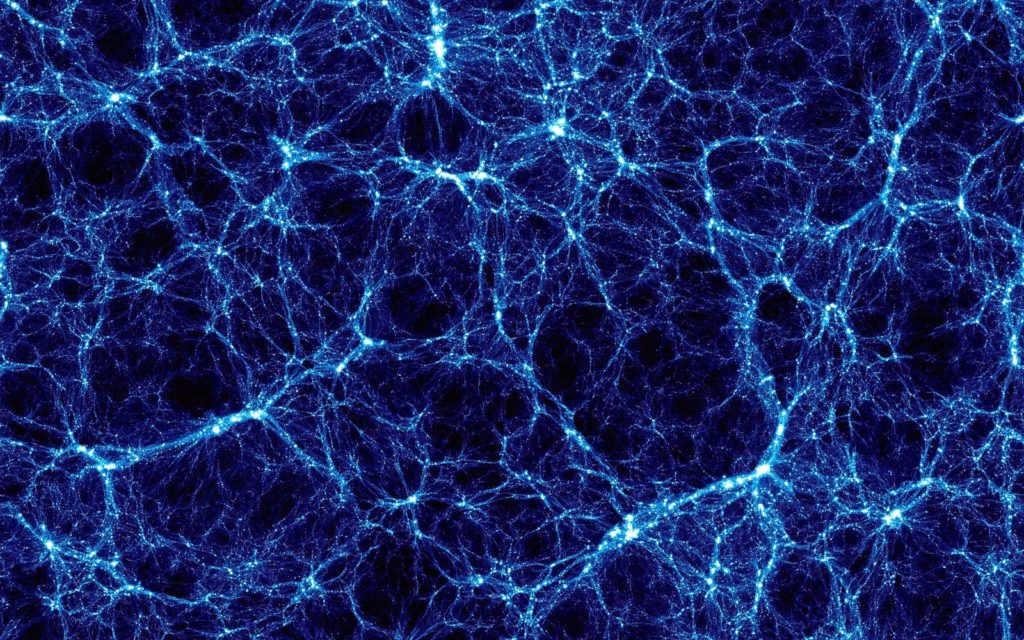
Gravity is one of the four fundamental forces of nature and is unique in its ability to act over long distances. It is responsible for the force of attraction between objects.
As a result, all matter in the universe exerts an attractive force on all other matter, causing space-time to curve and resist the expansion that has been occurring since the moment of the big bang. This leaves two potential outcomes for the long-term fate of the universe.
Firstly, if the gravitational pull within the universe is strong enough due to the abundance of matter, it could counteract the expansion and initiate a contraction. This contraction could eventually become so intense that it triggers another Big Bang, leading to a series of oscillations in the universe’s history.
One potential scenario is that there may not be enough substance and, consequently, insufficient gravitational energy to fully halt the expansion of the cosmos, albeit it would decelerate. Rather than contracting, the expansion would persist until the energy density reaches an extremely low level, causing it to implode and give rise to a lifeless, frigid universe.
Which of these two possibilities materializes hinges on the energy and matter encompassed within the cosmos.
However, an unexpected anomaly has arisen that was never even envisioned. Up until now, only these two alternatives have been taken into account: contraction, followed by the Big Bang and ongoing oscillation of the Universe, or a gradual slowdown of expansion culminating in a cold, deceased Universe.
Back in 1998, a significant discovery was made by American scientists Saul Perlmutter, Brian Schmidt, and Adam Riess. They found out that the commonly held belief that the expansion of the Universe is slowing down is actually not true. Surprisingly, their research revealed that the Universe is expanding at an accelerating rate instead.
But how is this possible? Gravity, which is the only known force capable of acting over such vast interstellar distances, is an attractive force, not a repulsive one. Therefore, it would be expected to slow down the expansion. However, since 1998, numerous observations have consistently confirmed that the expansion of the universe is indeed accelerating.
There could be no other reasonable explanation except for the existence of some alternative force driving this expansion. The nature of this force remains unknown to us. However, similar to how the unseen matter responsible for the increased mass of the universe has been labeled as dark matter, the invisible energy propelling the universe’s expansion has been referred to as dark energy.
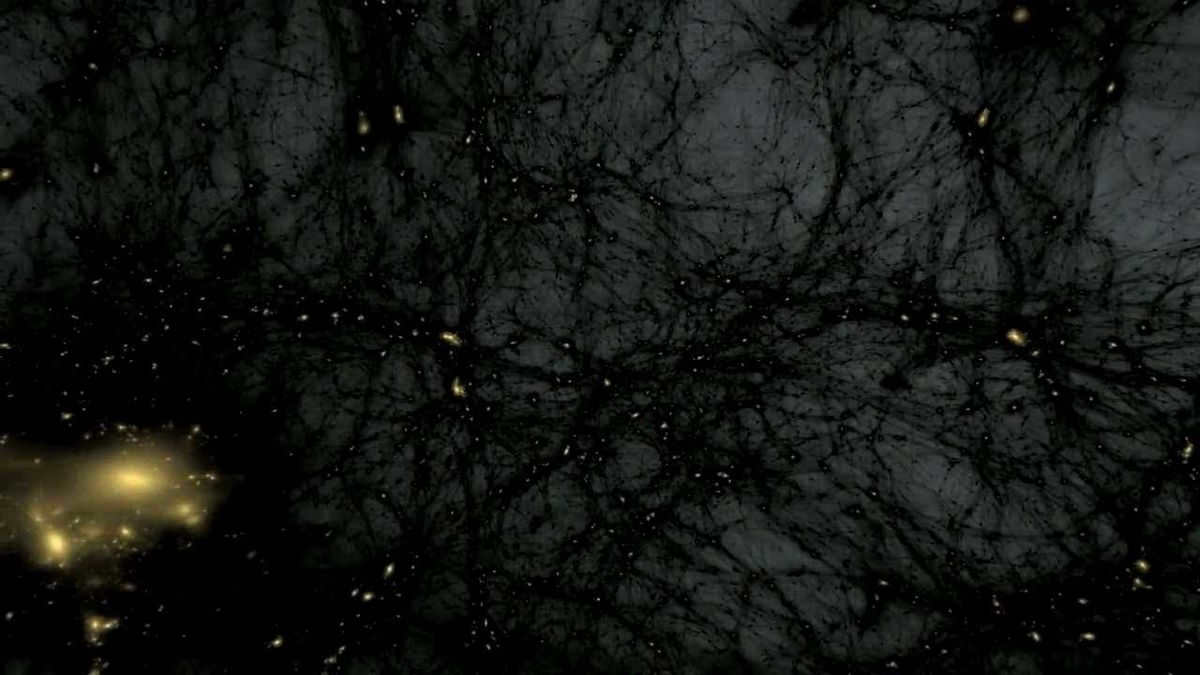
The similarities between dark matter and dark energy extend beyond just their names. Like dark matter, dark energy remains largely mysterious and unknown. Its origins and appearance are still a mystery.
However, what we do know is the amount of dark energy present in the universe, based on the rate of acceleration. And it is quite significant: regular matter and energy, which were once believed to constitute the entirety of the universe, only make up 5% of its actual contents. Dark matter, on the other hand, accounts for a quarter, or 25%, of the total universe. The remaining 70% is attributed to dark energy. In essence, this means that the vast majority, approximately 95%, of our universe is hidden from our view.
Exploring the Enigma of Dark Energy
Dark energy remains elusive due to its non-interaction with ordinary matter, and its mysterious nature adds to its enigmatic status. Currently, our understanding of the universe is based on a well-established framework comprising the standard model and general theory of relativity. Within this framework, we have identified the presence of matter, dark matter, and dark energy, although our knowledge about these components remains limited.
Both the Standard Model and the general theory of relativity accurately anticipate outcomes that have also been experimentally verified. Nonetheless, there is a pressing necessity for a theory that encompasses both of them, reconciles their disparities, and potentially provides more comprehensive explanations regarding the basic components of the cosmos. This gives rise to the requirement for a theory of everything, a unified theory that, once conceived, could elucidate the mechanics of the universe in unprecedented ways.
Common inquiries regarding dark energy
What exactly is dark energy?
Dark energy refers to the enigmatic energy that is responsible for the acceleration of the universe’s expansion.
What purpose would a Unified Theory serve?
A Unified Theory is essential in merging the understanding of the Standard Model and the General Theory of Relativity, with the potential to provide a more comprehensive comprehension of dark matter and dark energy.
What constitutes the universe?
Merely 5% of the universe consists of normal matter and energy, while 25% is comprised of dark matter, and the vast majority, 70%, is composed of dark energy.
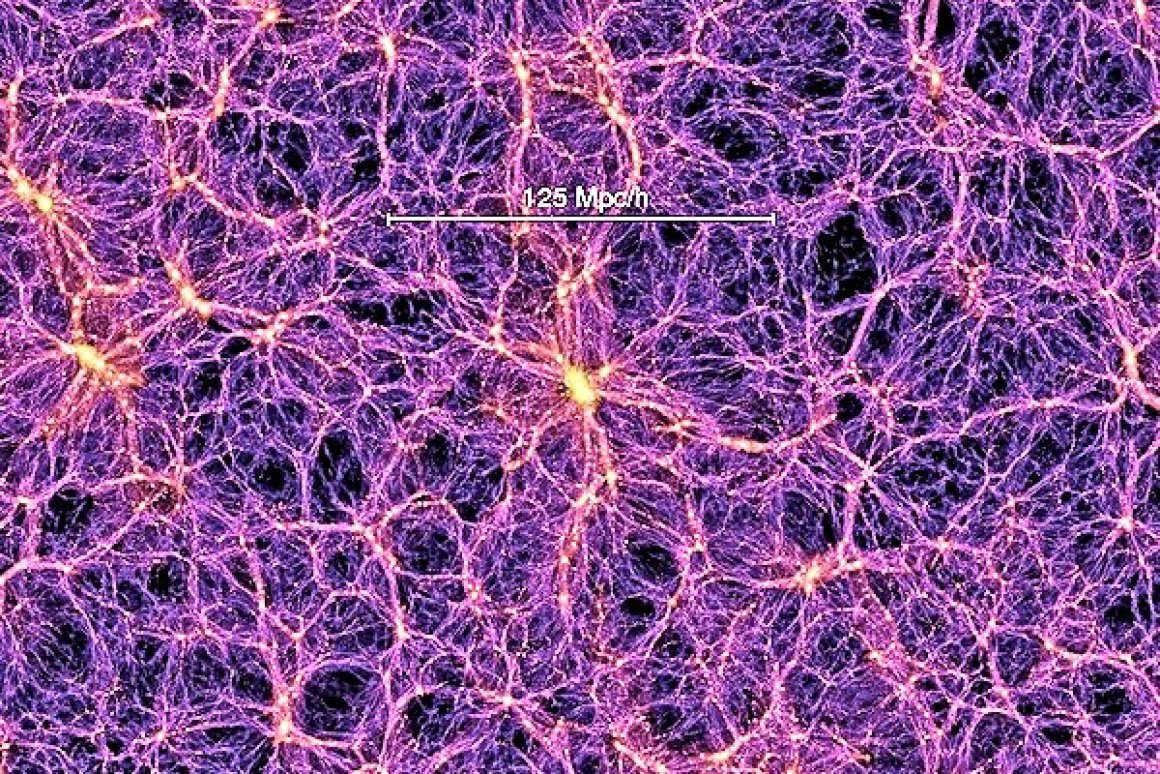
It may sound like something out of a science fiction movie, but the existence of invisible and undetectable matter known as dark matter is well-supported by evidence. So, what exactly is dark matter? How do we know it exists? And how do scientists go about searching for it?
Everything we can see in the world around us – from plants and planets, to rocks and stars, and even people or the Perseus cluster of galaxies – is made up of ordinary matter. However, this only accounts for approximately 15 percent of the total matter in the universe. The remaining 85 percent, which we refer to as dark matter, is still a mystery.
There is a global endeavor to discover the true nature of dark matter, but a logical query arises: if it is imperceptible to our senses – sight, touch, hearing, smell, and taste – how can we be certain of its existence?
The evidence for dark matter
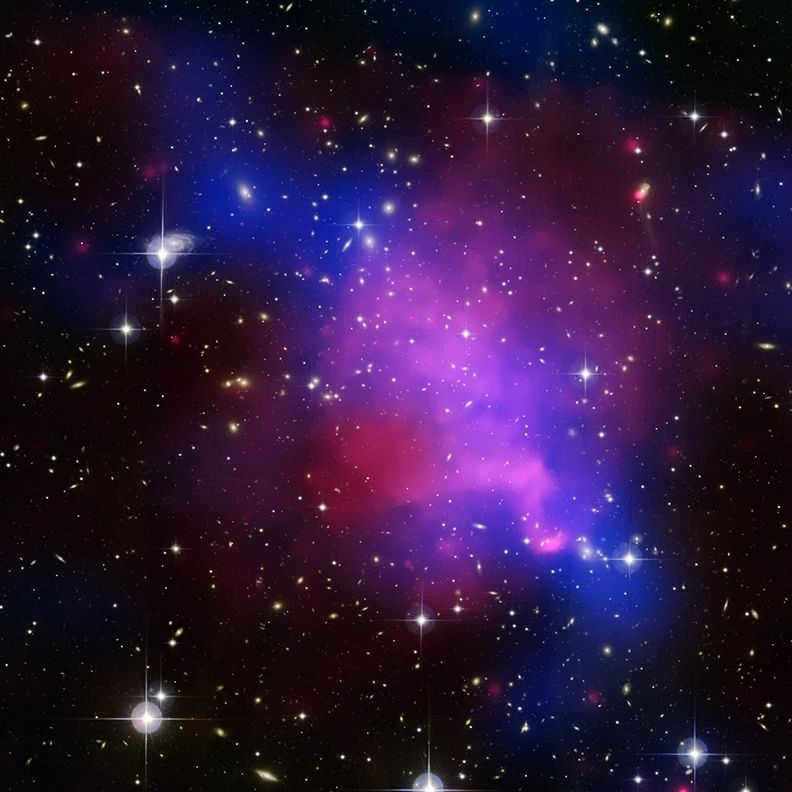
Every object with mass possesses a gravitational attraction, and the gravitational force becomes stronger as the mass increases. However, astronomers consistently observe that large-scale objects, such as galaxies and clusters, exhibit behavior that suggests they have a much greater mass than what is visible.
In 1933, Swiss astrophysicist Fritz Zwicky was the first to propose the concept of dark matter. He conducted a study on a cluster of galaxies and discovered a discrepancy: there appeared to be insufficient mass to account for the high velocities at which these galaxies were moving.
Zwicky’s finding was merely the initial instance of seemingly absent matter. During the latter part of the 1970s, astronomers Vera Rubin and Kent Ford studied our adjacent galaxy, Andromeda. The pair anticipated that objects located on the outer regions of the galaxy would rotate at a slower pace compared to those nearer to the center; however, this assumption proved incorrect. Instead, the relative velocities tended to equalize, with objects on the outskirts spinning at a significantly higher rate than what the apparent mass would suggest.
Gravitational lensing provides yet another convincing piece of evidence. When gravitational fields distort light rays, they have the ability to bend light around distant objects, resulting in an optical illusion where these objects appear larger or brighter, similar to a magnifying glass. In some instances, this phenomenon can even create multiple images of an object or “reproduce” events such as supernovae. What’s intriguing is that this gravitational lensing is often more powerful than what would be expected based on the visible mass of the object causing it.
Therefore, it is evident that dark matter exists. However, it becomes even more perplexing when we consider that the universe, as we currently understand it, would not be able to exist without the presence of dark matter.
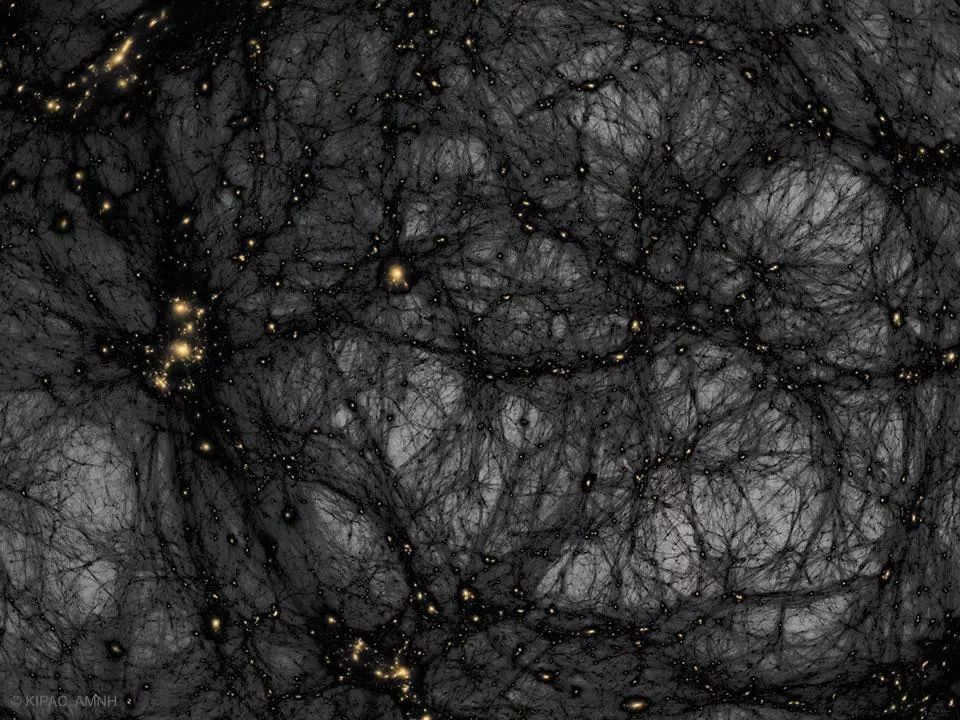
Similar to regular matter, dark matter is believed to have originated during the Big Bang – or perhaps even earlier, during a phase of cosmological inflation, according to one theory. In any case, the current structure of the cosmos would be significantly altered without the presence of dark matter.
In the initial stages of the universe, everything was relatively homogeneous. This can be observed today in the form of cosmic microwave radiation, which was generated approximately 400,000 years after the Big Bang. Regardless of the direction we observe, this radiation exhibits uniformity.
However, in our current era, the cosmos is far from being uniform – it is rather uneven. These irregularities are what we observe as galaxies, clusters, superclusters, and other colossal structures, with relatively empty space separating them. For instance, in the vicinity of the Milky Way lies the “local void,” an expanse of unfathomable emptiness that stretches across hundreds of millions of light years.
Therefore, what caused the transition of the universe from a super-smooth state to one filled with clumpy clusters? It can be attributed to the impact of dark matter.
Even during the peaceful early stages of the Universe, specific regions exhibited a slightly higher concentration of dark matter compared to others. This additional mass led to an increased gravitational pull, which attracted regular matter, resulting in a continuous cycle of attraction. Over time, the accumulation of heat and pressure culminated in the ignition of these matter pockets, giving birth to the formation of stars, planetary systems, galaxies, and clusters that we observe today.
The current structure of the universe serves as additional proof of the existence of dark matter. Hence, we possess knowledge of its presence. However, the precise nature of dark matter remains a mystery. How, then, are scientists endeavoring to detect it?
The search for mysterious dark matter

Searching for something that cannot be seen and rarely interacts with normal matter is a challenging task. Scientists begin by formulating theories about the nature of dark matter and then proceed to design and conduct experiments to test each hypothesis. The issue at hand is that dark matter has the potential to take on a multitude of forms.
Dark matter particles could range from being incredibly light to having the mass equivalent of a dwarf planet, or anything in between. Dark matter can exhibit characteristics of being “hot” or “cold”, which is unrelated to temperature but rather describes its velocity. Furthermore, dark matter can exist in excited states or possess lower energy levels.
“Theorists possess a great talent for formulating hypotheses regarding the nature of dark matter, and the majority of these hypotheses are highly plausible. In theory, they all have the potential to be true – however, it is impossible for all of them to be simultaneously true. Therefore, it is imperative that we conduct experiments and make astronomical observations in order to limit the possibilities and ultimately determine the truth,” explains Raymond Volkas, a professor specializing in theoretical particle physics at the University of Melbourne.
Is it possible for CERN to generate dark matter?

Various kinds of experiments are searching for various theoretical particles of dark matter. The most well-known experiments are carried out by CERN at the Large Hadron Collider (LHC). It is there that scientists are searching for dark matter in an effort to generate it.
At the LHC, protons collide at incredibly high energies, resulting in a stream of other particles. On occasion, these particles are exotic and not typically accessible to scientists, and it is hoped that dark matter may be among them.
Once again, if dark matter were to be produced in one of these collisions, it would be impossible to directly detect it – instead, it would simply drift out of the tunnel without interacting with the detector. However, this lack of detection is precisely what scientists are searching for.
In the field of physics, it is stated that in a closed system, neither energy nor momentum can be created or destroyed, according to the laws of conservation. However, they can undergo transformations, while the total amount remains constant. Therefore, scientists are able to calculate the initial energy and momentum before a proton collision, and compare it to the amount afterwards. If there is a discrepancy, it suggests that something, such as dark matter, has escaped and taken away that energy or momentum.
Despite the countless collisions that have occurred at the LHC over the years, no signs of suspicious dark matter have been detected thus far. Nevertheless, this lack of evidence helps to narrow down the extensive range of possibilities, allowing for more focused future investigations.
Possibly, the awaited answer will finally emerge upon the completion of the LHC upgrade in 2026.

While the Large Hadron Collider (LHC) is dedicated to searching for dark matter at one end of the spectrum of possibilities, there are other experiments underway that aim to detect it using different methods. These investigations are grounded in the idea that dark matter may have occasional interactions with regular matter through means other than just gravitational forces.
The concept described above has been implemented in various experiments conducted worldwide. Detectors are typically installed in deep underground chambers to minimize interference from cosmic rays or electromagnetic signals. Each experiment focuses on detecting different hypothetical particles of dark matter, utilizing different substances as the detecting material.
Experiments such as LUX and XENON1T employed large containers filled with xenon in an attempt to identify a potential dark matter candidate called a weakly interacting massive particle (WIMP). The theory suggests that when these hypothetical WIMPs collide with a xenon atom within the tank, they release a burst of light that can be detected by instruments.
Another suggestion involves the use of superfluid helium instead. The reasoning behind this is that helium possesses an atomic nucleus that is much lighter compared to xenon, making it more susceptible to the influence of dark matter. Consequently, it has the ability to capture dark matter particles that are 10,000 times lighter than those detected by other experiments.
A modified version of this concept is known as a “snowball chamber.” In this proposal, a container filled with pure water is supercooled to -20°C. At such extremely low temperatures, even the slightest disruption of the water molecules can trigger a flash freezing event. Therefore, if the water suddenly freezes without any apparent cause, it could be an indication of the presence of dark matter. The advantage of this approach is that water is significantly less expensive and simpler to use compared to xenon or superfluid helium.
In other types of experiments, the mechanisms involved operate in a completely different manner.
Axion is a particle that exists only in theory

An axion is a theoretical particle that is considered a strong contender for dark matter. These particles would be electrically neutral, extremely lightweight, and would permeate the universe in the form of waves. The key characteristic of axions is their ability to interact with electricity and magnetism, albeit with minuscule yet detectable effects.
The ABRACADABRA experiment aims to detect the presence of axions through their magnetic influence. The concept behind this experiment is based on the understanding that according to the principles of electromagnetic fields, there should be no magnetic field at the exact center of a ring magnet. By setting up the experiment and examining the center of the magnet, researchers can identify the presence of axions if a spontaneous magnetic field is detected.
In a similar concept, Stockholm University scientists have introduced a device named the Axion Radio. The sensor also utilizes a strong magnet, but its core consists of a chamber filled with cold plasma containing a multitude of ultra-thin wires. In this case, any axions that pass through the chamber will generate a small electric field, resulting in oscillations within the plasma.
The nEDM experiment takes a different approach to identify axions. In this experiment, neutrons are captured and charged, with their spin being controlled. By applying a high voltage at a specific frequency, the spin rate of the neutrons should be affected. If there is a noticeable change in this frequency over time, it could indicate interference from axions.
The absence of results does not render them invalid

Regrettably, all the aforementioned experiments have either yielded no results regarding dark matter or remain purely theoretical. However, the absence of a signal does not render the experiment a complete failure – the null outcomes are crucial in narrowing down the vast realm of possibilities.
Each test seeks dark matter candidates within a specific mass range and possessing distinct properties. As we eliminate them from the list, we edge closer to uncovering the truth. Furthermore, numerous experiments are slated to receive updates in the future, enhancing their sensitivity even further.
Meanwhile, entirely fresh concepts are frequently put forth. In recent times, scientists have proposed that dark matter may manifest as superheavy gravitinos, d-star hexaquarks, or even a negative-mass “dark fluid” pervading the cosmos.
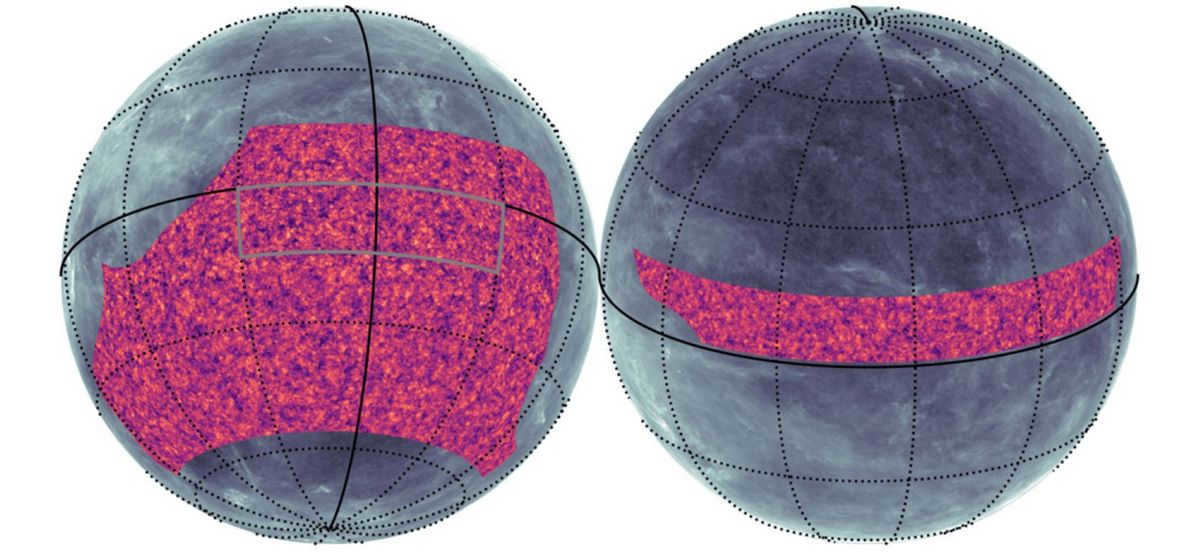
Throughout thousands of years, humanity has remained fascinated by the enigmas of the universe, seeking to comprehend its origins and evolution in order to gain insight into our own beginnings. The cosmic microwave background offers a window into the early stages of the universe, as it represents residual radiation from the Big Bang. Recently, scientists have successfully demonstrated, in line with Einstein’s general theory of relativity, that light that emerged 380,000 years following the Big Bang was “altered” by the presence of dark matter, which they were able to map out. Could this groundbreaking discovery bring an end to the ongoing crisis in the realm of modern cosmology?
The residual radiation after the Big Bang is known as the cosmic microwave background (CMB) and permeates the entire Universe. At the moment of its birth, approximately 14 billion years ago, the Universe was filled with a dense plasma of particles (protons, neutrons, and electrons) as well as photons (light). During the initial 380,000 years, photons interacted extensively with free electrons, resulting in an opaque fog-like state for the early Universe.
As the Universe gradually cooled, this fog dissipated, allowing electrons to combine with protons and form hydrogen atoms. Once the temperature dropped to a point where recombination was no longer possible, photons gained the ability to traverse the Universe, causing it to become predominantly transparent.
Recently, the Atacama Cosmology Telescope (ACT) Collaboration released a set of papers in The Astrophysical Journal unveiling an innovative and unparalleled map showcasing the distribution of dark matter throughout a vast portion of the sky. This map extends far into the depths of space and provides further confirmation of Einstein’s theory regarding the growth and distortion of light by massive structures over the course of the universe’s 13.8 billion years of existence. On April 11, the astronomers presented their remarkable discoveries at the Future Science with CMB x LSS conference held at the Yukawa Institute for Theoretical Physics in Japan.
The latest map utilizes the cosmic microwave background (CMB) as a source of illumination, which was detected by the Atacama Radio Telescope located in Chile. This technique effectively creates a shadow outline of the cosmic matter spanning from our current position to the moment of the Big Bang. Given that the CMB originated during the early stages of the universe, it holds valuable insights into the early cosmos. However, over time, it has undergone significant evolution and interacted with galaxy clusters. These interactions, in turn, imprint distinctive patterns on the CMB, allowing scientists to investigate the characteristics of these ancient galaxies.
What sets the researchers’ work apart is its ability to illuminate the complete structure of galaxies – the elusive dark matter that binds the universe together and links its various elements. According to David Spergel, a professor of astronomy at Princeton University and president of the Simons Foundation, “Ordinarily, astronomers are limited to measuring light, which allows us to observe the distribution of galaxies in the universe. However, these findings provide insight into the distribution of mass and the way in which dark matter is dispersed throughout our universe.”
Despite comprising the majority of the cosmos, dark matter poses a challenge for detection due to its lack of interaction with light and other forms of electromagnetic radiation. Instead, scientists must rely on indirect methods of observation, specifically through its gravitational effects.
According to current scientific understanding, the early universe was teeming with both matter and antimatter particles. If these particles were evenly distributed, they would annihilate upon collision, resulting in the total annihilation of all matter in the universe. However, the expansion of spacetime has preserved “pockets of primordial plasma” throughout the cosmos. It is within these pockets that scientists are searching for clues to the existence of dark matter.
Astronomers utilize gravitational lensing as a technique to chart the clusters of matter within the CMB. Gravitational lensing refers to the bending of light caused by the presence of a significant amount of matter, such as a galaxy (or in this situation, regions of plasma). Therefore, astronomers examine these distortions in faraway light to construct a visual representation of the arrangement of dark matter.
Has the crisis in cosmology been resolved?
The findings of the team confirm the predictions of Einstein regarding the growth of massive structures and the bending of light throughout the history of the universe. Professor Blake Sherwin, a co-author and cosmology expert at the University of Cambridge, explains, “We have successfully mapped out the invisible distribution of dark matter in the sky, and it aligns perfectly with our theories, which are based on Einstein’s theory of relativity”.
The author also adds, “Our results offer new insights into the ongoing debate known as the ‘crisis of cosmology.’ This debate has arisen from recent measurements using a different background light emitted by stars in galaxies, which suggests that the standard model of cosmology may not adequately account for the lumpiness of dark matter”.
Additional maps generated from ACT data and recent observations conducted by the Simons Observatory, an in-progress telescope located in the Atacama Desert that boasts a sky mapping capability ten times faster than ACT, have the potential to definitively settle this ongoing controversy.
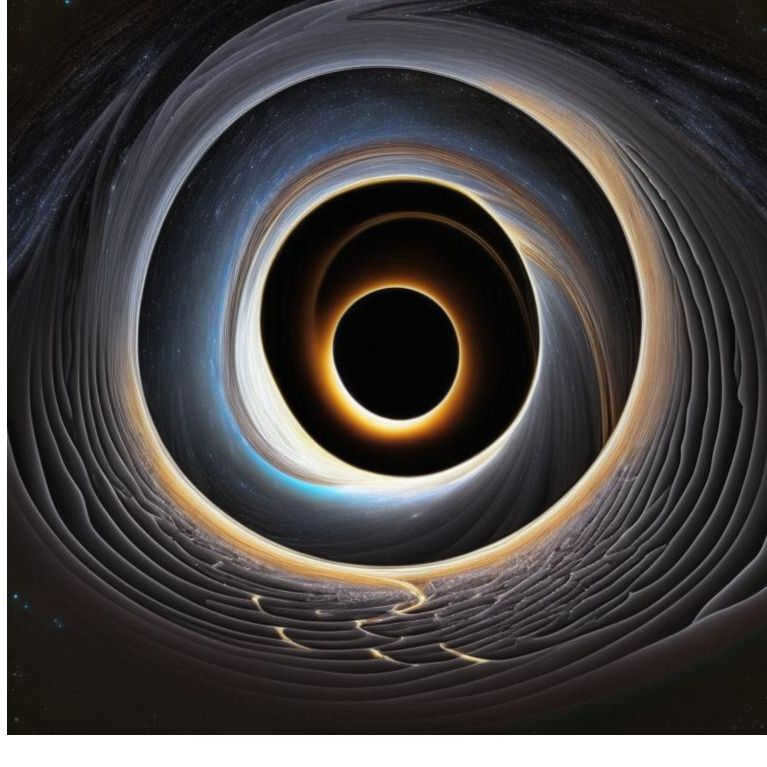
This article aims to elucidate the unfeasibility of detecting and ascertaining the presence and mechanism of the impacts of shadowy matter and energy on the material entities within our cosmos.
Importance
The significance of the subject: Currently, there is no concrete evidence to support or refute the existence of dark matter and energy.
Main Section
I would like to propose an idea to the global scientific community that offers an alternative explanation for the structure of the universe’s gravitational model, which excludes the unverifiable concepts of dark matter and energy (at least, for the time being).
Admittedly, there is a possibility of errors or flaws in my reasoning. Therefore, I encourage all interested individuals to carefully consider them, and I welcome a healthy discussion on all aspects of this article.
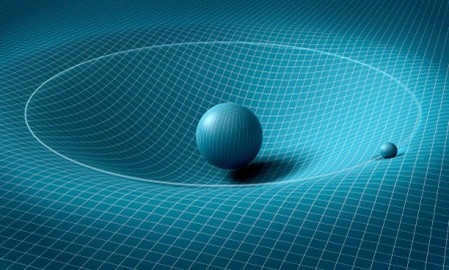
Alright, let’s begin by discussing the concept of dark matter. To illustrate this, we can refer to Wikipedia as a prime example of a vast repository of information on the natural world that is accessible to everyone. Here is a quote from the Russian version of Wikipedia, complete with all the necessary references:
The current understanding of dark matter is limited, as its composition and nature remain unknown. However, the cold dark matter model is widely accepted within the cosmological community.
- Vimps are considered to be the most likely candidates for dark matter particles.
- Despite ongoing efforts, experimental detection of vimps has not yet been achieved.
Based on observational data from the Planck Space Observatory, which was published in March 2013 and interpreted using the standard Lambda-CDM cosmological model, it is estimated that the observed Universe is composed of 4.9% ordinary (baryonic) matter, 26.8% dark matter, and 68.3% dark energy [1] [2]. This means that dark matter and dark energy make up 95.1% of the Universe [1].
I have identified the primary contradiction in explaining the disparity in angular velocities among various galactic objects, noting that this phenomenon is not observed in the solar system.
Allow me to present my perspective on the matter from a slightly different angle.
There exists a theory that interprets gravity as a phenomenon that determines the curvature of the space around us, contingent upon the presence of mass at specific points:
General Relativity (GTR; German. allgemeine Relativitätstheorie) is the prevailing theory of gravitation that characterizes gravity as a manifestation of spacetime’s geometry. It was put forth by Albert Einstein between 1915 and 1916.[2]
Let’s begin by examining the solar system:
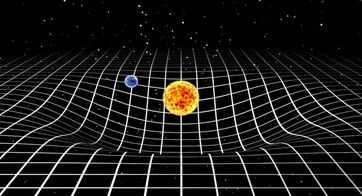
Let’s take a as Mercury and b as Earth, for instance.
It is evident that in our solar system, the closer objects are to the Sun, the higher their angular velocity and the shorter their rotation period, primarily due to the smaller diameter of their orbit or the gravity well formed by the Sun’s massive size.
Since we are situated within our own gravitational well, we hardly observe any deviations in Newton’s and Kepler’s laws, attributing it to the scarcity of dark matter, in fact, it may not exist at all. Everything becomes comprehensible when considering the curvature of spacetime fabric, as proposed by Einstein’s theory, which has been repeatedly confirmed, including through experimental evidence.
Now, I would like to bring your focus to this issue as we delve into the exploration of the characteristics of the gravitational well of massive astronomical bodies, which possess a significantly greater mass than our own planetary system.
Take a look at the diagram below:
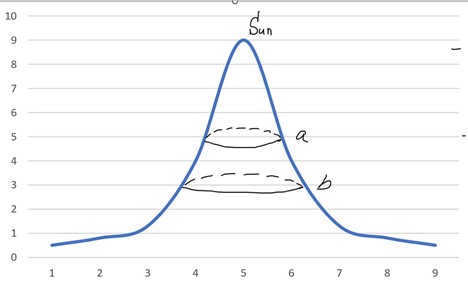
The gravity well becomes deeper and more elongated as the mass and gravitational force increase. As a result, the orbits of objects within this gravity well appear to have the same diameter, resembling a cylinder (Fig. 5).
Therefore, it can be concluded that the galaxies we see are actually gravitational funnels or wells in the space surrounding us.
The slight difference in angular velocity between stars in the center and on the periphery is merely a visual effect when observing from the perspective of the gravitational well created by the massive central mass of the galaxy.
Question! Why introduce dark matter into this? Especially when it is unobservable and unprovable?
Now let’s discuss dark energy.
Looking at it from a different angle, one can explain it by considering that the older a galaxy is, the farther away it is from us. Consequently, these galaxies have more mass, resulting in the light emitted from the accretion disk being redshifted due to the increased mass at the center and the deep gravity well. As a result, it becomes increasingly challenging for the light to escape and reach our eyes.
In my perspective, our world can be seen as a gravitational fractal composed of clusters of galaxies, each containing gravitational wells. Within these wells, we have galaxies, stars, planetary systems, and so on.





